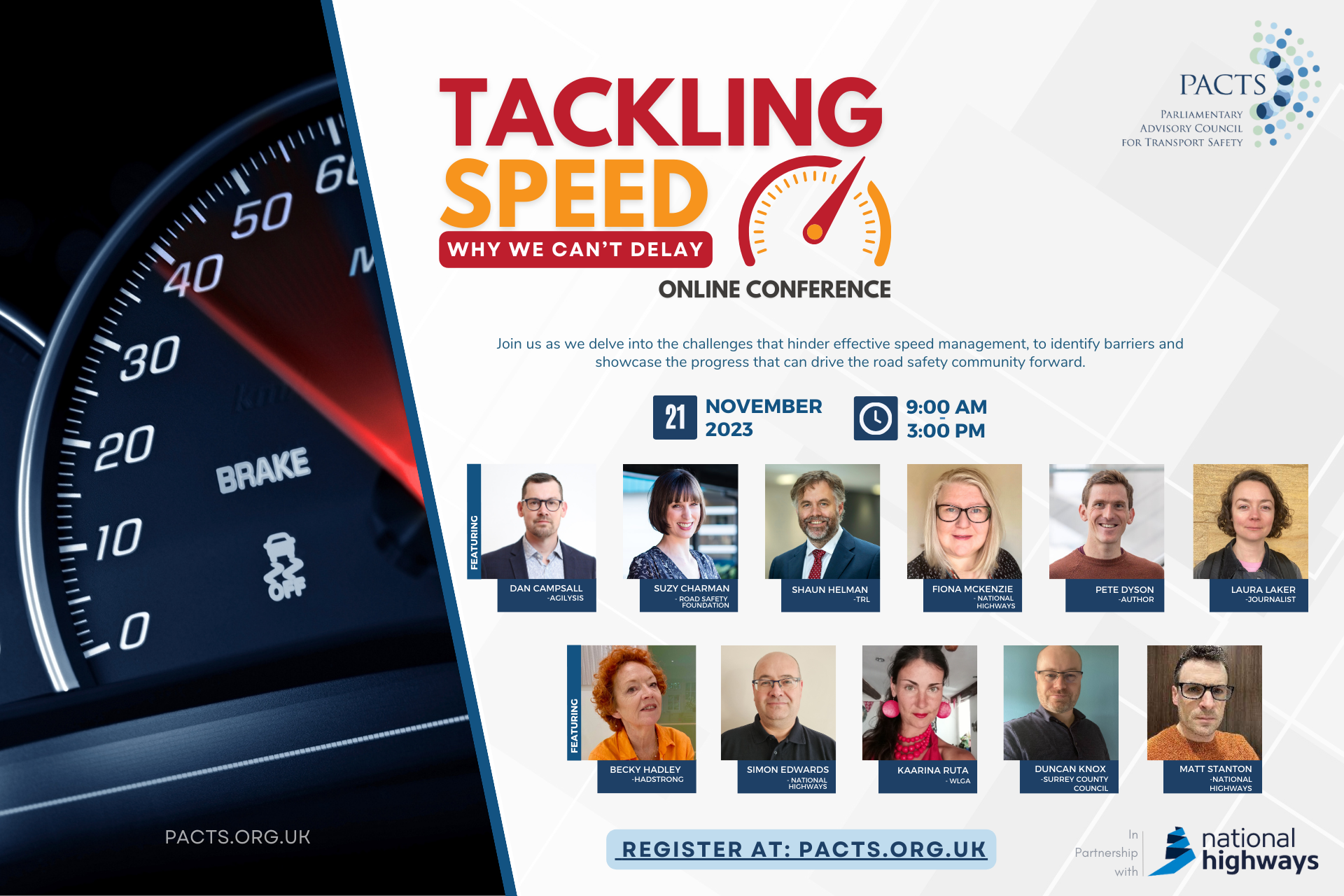
This conference, held on 21st November 2023, aimed to enhance comprehension of the existing barriers hindering the widespread adoption of the Safe System approach to speed management, highlighting areas where advancements are being achieved and facilitating the progression of road safety in the UK.
The conference opened with a talk by Dan Campsall (Chairman, Agilysis) about the Safe System and why speed is such an important topic to discuss. He included discussion on whether 20mph is in fact the right speed limit in most urban settings. Following on was Shaun Helman (Chief Scientist: Behaviour Sciences, TRL), who spoke about the evidence behind speed and how recent work demonstrates how much of a real issue speed still is within the road safety community. He highlighted the difference that speed makes and the change in collision dynamics introduced by relatively small increases in the speed of a vehicle.
Pete Dyson (Author of ‘Transport for Humans’) spoke about how speed relates to human factors and its role in travel choice. His talk highlighted how people are not cargo and how we need to think about the transit of people differently to the way we think about the transit of goods. His visual aids demonstrated how our perceptions of our environment can be disrupted, even for people who are particularly attuned to their surroundings. Following on from that, Suzy Charman (Executive Director, RSF) showed us how we value journey time twice as much as we value human life, demonstrating that further conversation is needed about the way in which we evaluate why speed matters.
In the second session, Duncan Knox (Travel Team Manager, Road Safety & Sustainable School, Surrey County Council) gave a talk entitled ‘Speed Management Project for A and B class roads and compliance strategy including working with the police’, which drew on the work that Surrey has been doing around addressing rural speed limits. His talk highlighted the importance of using evidence to understand how what you’re doing maps onto existing use of that road network and current road user behaviour. There is much better value for money to be gained from reducing limits across an area for the same level of costs as implementing one signalised junction, for example.
Bridget Elliott (Safety Strategy Manager, Safety, Health and Environment, TFL) spoke about managing safe speeds in London and the growing role for Intelligent Speed Assistance Technology. 220 of 580km of the London road network has already been converted to 20mph, with commitments from 19 out of the 23 boroughs. Following on from that, Kaarina Ruta (Transport Assistant, Welsh Local Government Association) spoke about the experience of introducing the 20mph speed limit in Wales, including the importance of the Welsh government leadership in engaging with and exploring the evidence around 20mph limits, as well as what this change may lead to in terms of collision and fatalities reductions. There is still much ongoing monitoring, discussion and further work needed.
The final talk of the second session was from Fiona McKenzie and Simon Edwards of National Highways, who spoke about implementing speed management on the Strategic Road Network. They drew attention to the issues with casualty data (lack of contemporaneous data reporting) and the BCR for the scheme.

